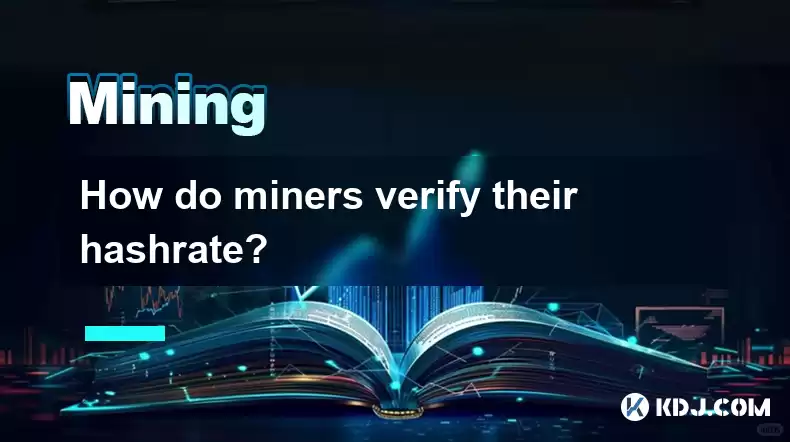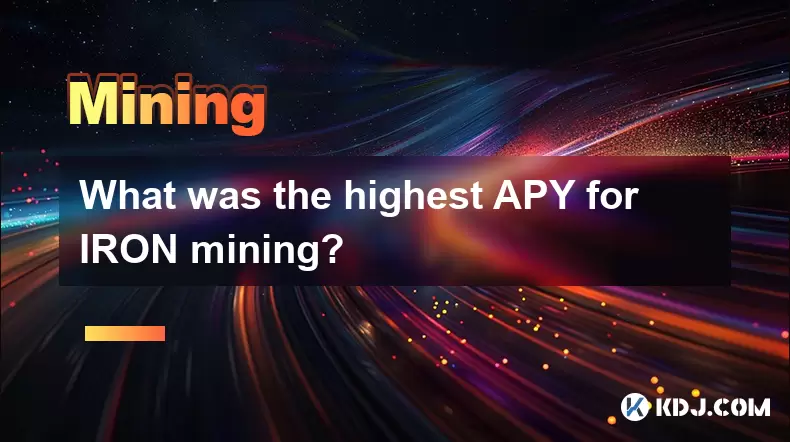-
 Bitcoin
Bitcoin $115000
0.12% -
 Ethereum
Ethereum $3701
4.50% -
 XRP
XRP $3.081
2.99% -
 Tether USDt
Tether USDt $0.0000
-0.01% -
 BNB
BNB $767.9
1.45% -
 Solana
Solana $169.5
3.13% -
 USDC
USDC $0.9999
0.01% -
 Dogecoin
Dogecoin $0.2106
4.30% -
 TRON
TRON $0.3334
1.62% -
 Cardano
Cardano $0.7564
2.54% -
 Stellar
Stellar $0.4165
0.76% -
 Hyperliquid
Hyperliquid $38.75
0.25% -
 Sui
Sui $3.593
3.00% -
 Chainlink
Chainlink $17.08
3.59% -
 Bitcoin Cash
Bitcoin Cash $573.6
4.35% -
 Hedera
Hedera $0.2508
-0.84% -
 Avalanche
Avalanche $23.07
6.46% -
 Ethena USDe
Ethena USDe $1.001
-0.02% -
 Litecoin
Litecoin $120.8
8.17% -
 UNUS SED LEO
UNUS SED LEO $8.943
-0.32% -
 Toncoin
Toncoin $3.400
-5.60% -
 Shiba Inu
Shiba Inu $0.00001255
1.54% -
 Uniswap
Uniswap $9.908
6.32% -
 Polkadot
Polkadot $3.718
2.10% -
 Monero
Monero $303.0
-0.74% -
 Dai
Dai $0.9999
-0.02% -
 Bitget Token
Bitget Token $4.392
0.91% -
 Cronos
Cronos $0.1403
6.31% -
 Pepe
Pepe $0.00001076
1.13% -
 Aave
Aave $267.2
1.80%
How do miners verify their hashrate?
Miners verify hashrate using local software, pool reporting, and third-party services to ensure fair compensation and maintain blockchain integrity.
Apr 10, 2025 at 12:08 pm

Introduction to Hashrate Verification
Hashrate is a critical metric for miners in the cryptocurrency world, as it represents the computational power they contribute to the network. Verifying the hashrate is essential for miners to ensure they are accurately compensated for their efforts and to maintain the integrity of the mining process. In this article, we will explore the various methods miners use to verify their hashrate, the tools they employ, and the importance of accurate hashrate reporting.
Understanding Hashrate
Before diving into the verification process, it's important to understand what hashrate is. Hashrate refers to the number of hash operations a miner's hardware can perform per second. It is typically measured in units such as hashes per second (H/s), kilohashes per second (KH/s), megahashes per second (MH/s), gigahashes per second (GH/s), and terahashes per second (TH/s). The higher the hashrate, the more likely a miner is to solve the cryptographic puzzle required to validate transactions and add them to the blockchain.
Methods of Hashrate Verification
Miners can verify their hashrate using several methods, each with its own advantages and limitations. The most common methods include:
- Local Monitoring Software: This involves using software installed directly on the mining rig to monitor and report the hashrate.
- Pool Reporting: Miners can rely on the hashrate data provided by the mining pool they are part of.
- Third-Party Services: Independent services that monitor and report hashrate can provide an additional layer of verification.
Using Local Monitoring Software
Local monitoring software is one of the most direct ways for miners to verify their hashrate. Here's how miners can use this method:
- Choose the Right Software: Popular options include CGMiner, EasyMiner, and Awesome Miner. Each software has its own interface and features, so miners should choose one that best fits their needs.
- Install and Configure: Download the chosen software and follow the installation instructions. Configuration may involve setting up the mining pool details, selecting the cryptocurrency to mine, and adjusting other settings as needed.
- Monitor Hashrate: Once the software is running, it will display the current hashrate of the mining rig. Miners can monitor this in real-time to ensure their hardware is performing as expected.
Pool Reporting
Mining pools aggregate the hashrate of multiple miners to increase the chances of solving the cryptographic puzzle and earning rewards. Pools typically provide detailed statistics on each miner's contribution, including their hashrate. Here's how miners can use pool reporting to verify their hashrate:
- Join a Mining Pool: Miners need to be part of a mining pool to access pool reporting. Popular pools include Slush Pool, Antpool, and F2Pool.
- Access Pool Dashboard: Once registered, miners can log into the pool's dashboard, where they will find a section dedicated to their mining statistics.
- Check Hashrate Data: The dashboard will display the miner's hashrate as reported by the pool. This data can be compared with local monitoring software to ensure accuracy.
Third-Party Services
Third-party services offer an independent way to verify hashrate, which can be useful for miners who want to cross-check their data. Here's how miners can use these services:
- Select a Service: Services like WhatToMine and Coinwarz provide hashrate calculators and monitoring tools. Miners should choose a service that supports their mining hardware and the cryptocurrency they are mining.
- Input Mining Data: Miners need to enter details about their mining setup, including the type of hardware, the cryptocurrency being mined, and the mining pool they are using.
- Compare Results: The service will calculate and display the expected hashrate based on the input data. Miners can compare this with their local monitoring software and pool reporting to ensure consistency.
Importance of Accurate Hashrate Reporting
Accurate hashrate reporting is crucial for several reasons:
- Fair Compensation: Miners need to ensure they are being fairly compensated for their contribution to the network. Accurate hashrate reporting helps prevent discrepancies in reward distribution.
- Hardware Performance: Monitoring hashrate allows miners to detect any issues with their hardware, such as overheating or underperformance, and take corrective action.
- Network Integrity: Accurate hashrate reporting helps maintain the integrity of the blockchain by ensuring that the network's total hashrate is correctly represented.
Challenges in Hashrate Verification
Despite the availability of various methods, miners may still face challenges in verifying their hashrate:
- Inconsistent Data: Different tools and services may report slightly different hashrate values, which can lead to confusion.
- Pool Manipulation: Some mining pools may manipulate hashrate data to favor certain miners or to inflate their reported total hashrate.
- Hardware Variability: The performance of mining hardware can vary over time due to factors like temperature, age, and wear and tear, which can affect hashrate readings.
Best Practices for Hashrate Verification
To ensure accurate hashrate verification, miners should follow these best practices:
- Use Multiple Methods: Combining local monitoring software, pool reporting, and third-party services can provide a more comprehensive view of hashrate.
- Regularly Update Software: Keeping monitoring software and mining hardware firmware up to date can help ensure accurate readings.
- Monitor Hardware Health: Regularly checking the health of mining hardware can help detect issues that may affect hashrate.
Frequently Asked Questions
Q: Can hashrate fluctuate over time, and if so, why?
A: Yes, hashrate can fluctuate due to several factors, including changes in network difficulty, hardware performance, and environmental conditions like temperature. Miners should monitor their hashrate regularly to understand these fluctuations and adjust their operations accordingly.
Q: How does network difficulty affect hashrate verification?
A: Network difficulty is a measure of how hard it is to solve the cryptographic puzzle required to mine a block. As difficulty increases, the hashrate required to mine a block also increases. Miners need to consider network difficulty when verifying their hashrate to ensure they are accurately assessing their hardware's performance.
Q: What should miners do if they notice a discrepancy in hashrate readings between different methods?
A: If miners notice a discrepancy in hashrate readings, they should first check for any hardware issues or software misconfigurations. If the issue persists, they may need to contact their mining pool or use additional third-party services to cross-verify their data. It's important to resolve discrepancies to ensure accurate compensation and maintain the integrity of the mining process.
Q: Is it possible for a mining pool to manipulate hashrate data, and how can miners protect themselves?
A: Yes, some mining pools may manipulate hashrate data to favor certain miners or to inflate their reported total hashrate. Miners can protect themselves by using multiple methods of hashrate verification, including local monitoring software and third-party services, to cross-check the data provided by their mining pool. Additionally, choosing reputable and transparent mining pools can help minimize the risk of manipulation.
Disclaimer:info@kdj.com
The information provided is not trading advice. kdj.com does not assume any responsibility for any investments made based on the information provided in this article. Cryptocurrencies are highly volatile and it is highly recommended that you invest with caution after thorough research!
If you believe that the content used on this website infringes your copyright, please contact us immediately (info@kdj.com) and we will delete it promptly.
- Cryptocurrency, Altcoins, and Profit Potential: Navigating the Wild West
- 2025-08-04 14:50:11
- Blue Gold & Crypto: Investing Disruption in Precious Metals
- 2025-08-04 14:30:11
- Japan, Metaplanet, and Bitcoin Acquisition: A New Era of Corporate Treasury?
- 2025-08-04 14:30:11
- Coinbase's Buy Rating & Bitcoin's Bold Future: A Canaccord Genuity Perspective
- 2025-08-04 14:50:11
- Coinbase's Buy Rating Maintained by Rosenblatt Securities: A Deep Dive
- 2025-08-04 14:55:11
- Cryptos, Strategic Choices, High Returns: Navigating the Meme Coin Mania
- 2025-08-04 14:55:11
Related knowledge

What was the highest APY for IRON mining?
Jul 23,2025 at 05:14am
Understanding IRON Token and Its Mining MechanismThe IRON token is a stablecoin that operates within the Iron Finance ecosystem, primarily on blockcha...

What is impermanent loss in IRON pools?
Jul 23,2025 at 09:00am
Understanding Impermanent Loss in the Context of IRON PoolsImpermanent loss is a phenomenon that affects liquidity providers in decentralized finance ...

How to claim rewards from IRON mining?
Jul 23,2025 at 02:21pm
Understanding IRON Mining and Reward MechanismsIRON Finance operated as a decentralized finance (DeFi) protocol on the Polygon and Binance Smart Chain...

How to claim rewards from IRON mining?
Jul 29,2025 at 05:07am
Understanding IRON Mining and Reward MechanismIRON is a dual-token system designed to stabilize the value of a synthetic asset through a combination o...

IRON mining tutorial for beginners
Jul 27,2025 at 12:01am
What Is IRON and How Does It Work in the Cryptocurrency Ecosystem?IRON is a cryptocurrency token that operates on the Binance Smart Chain (BSC) and is...

How to calculate APY for IRON mining?
Jul 28,2025 at 09:49am
Understanding APY in the Context of IRON Token MiningWhen engaging in IRON token mining within decentralized finance (DeFi) platforms, Annual Percenta...

What was the highest APY for IRON mining?
Jul 23,2025 at 05:14am
Understanding IRON Token and Its Mining MechanismThe IRON token is a stablecoin that operates within the Iron Finance ecosystem, primarily on blockcha...

What is impermanent loss in IRON pools?
Jul 23,2025 at 09:00am
Understanding Impermanent Loss in the Context of IRON PoolsImpermanent loss is a phenomenon that affects liquidity providers in decentralized finance ...

How to claim rewards from IRON mining?
Jul 23,2025 at 02:21pm
Understanding IRON Mining and Reward MechanismsIRON Finance operated as a decentralized finance (DeFi) protocol on the Polygon and Binance Smart Chain...

How to claim rewards from IRON mining?
Jul 29,2025 at 05:07am
Understanding IRON Mining and Reward MechanismIRON is a dual-token system designed to stabilize the value of a synthetic asset through a combination o...

IRON mining tutorial for beginners
Jul 27,2025 at 12:01am
What Is IRON and How Does It Work in the Cryptocurrency Ecosystem?IRON is a cryptocurrency token that operates on the Binance Smart Chain (BSC) and is...

How to calculate APY for IRON mining?
Jul 28,2025 at 09:49am
Understanding APY in the Context of IRON Token MiningWhen engaging in IRON token mining within decentralized finance (DeFi) platforms, Annual Percenta...
See all articles

























































































